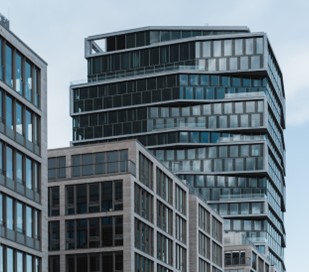
In the face of increasing natural disasters, the importance of creating resilient commercial buildings cannot be overstated. Natural disasters such as hurricanes, earthquakes, floods, and wildfires pose significant threats to commercial properties, potentially disrupting business operations and causing severe economic losses. Therefore, designing and managing commercial buildings to withstand these events is crucial for ensuring business continuity and safeguarding investments. David Shulick discusses below some of the best strategies for enhancing the resilience of commercial buildings against natural disasters.
Understanding the Risks
Before implementing resilience strategies, it is essential to understand the specific risks associated with natural disasters in the specific region. Different areas are prone to different types of disasters, and each requires tailored mitigation strategies. For instance, coastal regions might face hurricanes and flooding, while areas along fault lines are at risk of earthquakes. Conducting a thorough risk assessment is the first step in developing a comprehensive disaster preparedness plan.
Designing for Resilience
Structural Integrity
Ensuring the structural integrity of commercial buildings is paramount. Employing robust construction materials and techniques can significantly enhance a building’s ability to withstand natural disasters. For earthquake-prone areas, buildings should be designed to absorb and dissipate seismic energy. This can be achieved through the use of flexible building materials, reinforced frames, and base isolators that allow the building to move independently of ground motion.
Elevated Design
In flood-prone areas, elevating the structure above potential flood levels can prevent water damage. This can be done by raising the foundation or incorporating stilts into the building design. Additionally, installing flood barriers and water-resistant materials in lower levels can provide extra protection against flooding.
Wind-Resistant Features
For regions susceptible to hurricanes and high winds, incorporating wind-resistant features is crucial. This includes reinforced roofs, impact-resistant windows, and doors, as well as securely anchoring the building to its foundation. These measures can prevent structural damage and reduce the risk of debris penetration during storms.
Fire-Resistant Materials
In areas at risk of wildfires, using fire-resistant materials can prevent the spread of fire and minimize damage. Materials such as concrete, steel, and fire-rated gypsum board can be used for construction. Additionally, creating defensible space by clearing vegetation and combustible materials around the building can reduce the risk of wildfire reaching the structure.
Managing Resilience
Regular Maintenance and Inspections
Regular maintenance and inspections are vital for identifying potential vulnerabilities and ensuring that resilience features remain effective. This includes checking for structural weaknesses, inspecting fire suppression systems, and ensuring that flood barriers and drainage systems are functional. Routine maintenance can help address issues before they become significant problems during a disaster.

Emergency Preparedness Plans
Developing comprehensive emergency preparedness plans is essential for ensuring a swift and effective response during a disaster. These plans should include evacuation procedures, communication protocols, and roles and responsibilities for building occupants and management. Regular drills and training sessions can ensure that everyone knows what to do in an emergency, reducing confusion and enhancing safety.
Backup Power Systems
Power outages are common during natural disasters, so having backup power systems in place is crucial. Generators and uninterruptible power supplies (UPS) can keep essential systems running, such as emergency lighting, communication systems, and critical business operations. Ensuring that these systems are regularly tested and maintained can provide reliable power during an outage.
Insurance Coverage
Adequate insurance coverage is a key component of resilience. Property insurance, business interruption insurance, and specific disaster insurance policies can provide financial protection against the costs of repairs and lost revenue due to natural disasters. Reviewing and updating insurance policies regularly can ensure that coverage remains adequate as risks evolve.
Building Partnerships
Collaborating with local authorities, emergency services, and other businesses can enhance resilience efforts. These partnerships can provide valuable resources and support during and after a disaster. Additionally, participating in community resilience initiatives can help create a more resilient environment for everyone.
Conclusion
Creating resilient commercial buildings is a multifaceted approach that involves understanding regional risks, designing robust structures, and implementing effective management practices. By investing in resilience, businesses can safeguard their properties, protect their employees, and ensure continuity of operations during and after natural disasters. As climate change continues to increase the frequency and severity of these events, the importance of resilient commercial buildings will only grow. Taking proactive steps today can mitigate the impacts of future disasters and build a safer, more resilient future for commercial properties.



